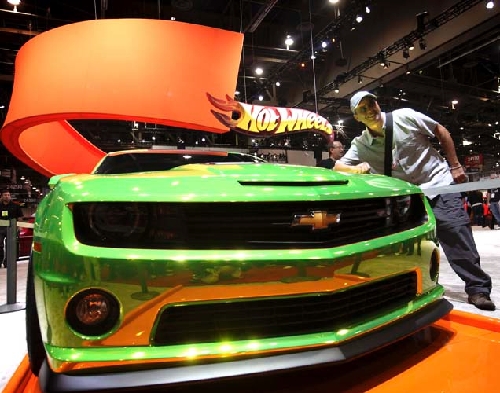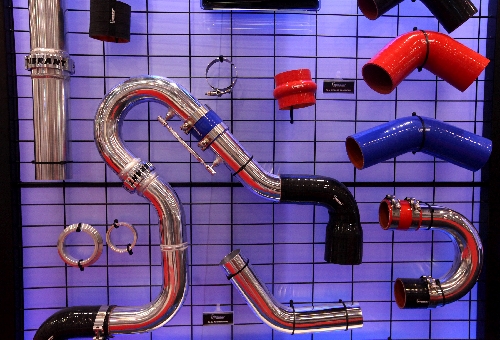SEMA Show panelists see profits in custom vehicle parts
Style-conscious car and truck buyers are willing to pay a premium to personalize their vehicles, spending $1,000 to $3,500 a year on accessories after the initial sale.
That's money being left on the table at automobile dealerships.
To maximize profits on every sale, dealers need to find ways to tap into the $28.6 billion-a-year business of custom parts and accessories, a panel of automotive experts said Wednesday at the SEMA Show in Las Vegas.
One of the easiest ways to capture that business at the dealership is to display accessorized vehicles in the showroom that consumers cannot resist, said Jon Titman of Prestige Automotive Accessories.
"If you're not involved with accessories, you're missing the boat on revenue," Titman said at SEMA's Dealer Day program. "You're going to have three, four, five times the sales if you have accessories on your lot. If you don't show it, you're not going to sell it."
Accessories influence more than 1 million vehicle sales a year, a market study by the Specialty Equipment Market Association and AutoPacific found.
Consumers who see accessories on display at the dealership are more inclined to purchase a specific model simply because it's been customized, said Dan Hall, vice president of Tustin, Calif.-based AutoPacific.
The type of accessorization varies with vehicle category, age group, income and purpose.
Tire and wheel upgrades top the list, Hall said. Next would be audio, entertainment and telematics. It's getting to be that previous options such as navigation systems are expected as standard equipment, especially if someone is paying $40,000 to $50,000 for a vehicle, he said.
Truck owners will want tow hitches, running boards and bed liners, Hall said.
Why do people modify their cars and trucks?
"Comfort," auto enthusiast Michael Fox of Texas said during a panel discussion on buying decisions. "I bought running boards for my F-150 through the dealer. My wife is short and needs the board to step up into the truck."
Chip Baldwin of New York, who accessorized his SRT8 Jeep Cherokee through the dealer, answered, "Performance. And modifications so people can see it."
Auto dealers are not making much of a gross profit these days on the "front end" of a deal, or when the vehicle is sold, David Boutwell of CODA Automotive said. The margin is less than $800, he said.
But they can make $2,500 to $3,000 on the "back end," in financing and insurance and accessories, Boutwell said.
Dealerships have to buy into the program from the top down, he said. They also have to take a hard look at the products they're offering. If they put something cheap on a vehicle and it fails, they're going to get a bad name.
"The key is if you're going to do it, don't just dabble in it," added Chris Ferren of Bewley Allen Cadillac in Alhambra, Calif. "Be committed and make sure everyone's on board. Part of the assessment is if you're a small dealership, don't try to make it a big dealership through accessories. Start with a slow rollout and grow. You've got to invest manpower and money."
Dealers need to connect with their customers. The Internet is where consumers today are looking first for aftermarket parts and accessories. Some 84 percent of shoppers use the Internet to research and make purchasing decisions, the SEMA-AutoPacific study showed.
Matt Tom of Los Angeles said manufacturers have recognized social media such as Twitter as a platform to launch new products, and dealers might think about following their lead.
"My generation was born with a cellphone in their hand," the 20-something consumer said.
Contact reporter Hubble Smith at hsmith@reviewjournal.com or 702-383-0491.



















